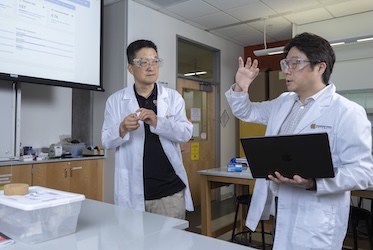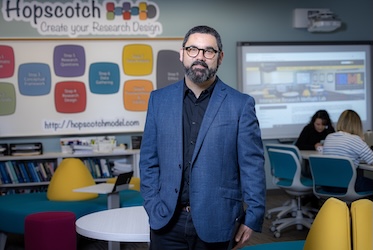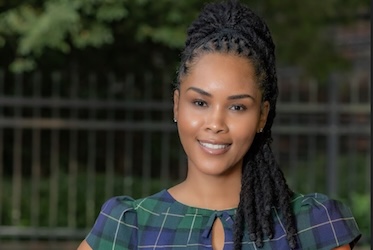Unveiling the Mysteries: The Life of an Aztec Priestess Revealed
2025-10-09 10:00
The recent archaeological discoveries at the Templo Mayor site in Mexico City have provided unprecedented insights into the life of Aztec priestesses, offering a fascinating glimpse into a world long shrouded in mystery. As researchers carefully piece together fragments of history, we find ourselves confronted with the complex reality of these powerful women who stood at the intersection of spiritual authority and political influence in one of Mesoamerica's most sophisticated civilizations. The painstaking process of reconstructing their stories from scattered artifacts and damaged codices presents challenges that echo in modern contexts, particularly when considering how we approach restoration and interpretation of historical narratives. Much like the challenges faced in digital restoration projects where the concept of rebuilding isn't problematic but its execution creates obstacles, archaeologists must navigate multiple physical locations and fragmented sources to reconstruct the complete picture of these remarkable women's lives.
The excavation of what appears to be a priestess's residence near the main temple complex reveals a sophisticated living space that challenges previous assumptions about gender roles in Aztec society. Artifacts discovered include ceremonial knives, incense burners, and what appears to be a collection of divination tools, suggesting these women held significant religious responsibilities. The spatial arrangement of these artifacts tells a story of daily rituals and spiritual practices that connected the earthly realm with the divine. However, the fragmented nature of these discoveries creates a situation where researchers must physically move between different excavation sites and museum collections to connect related artifacts, slowing the pace of comprehensive understanding. This methodological challenge parallels the implementation issues described in restoration contexts, where valuable time and resources are spent navigating physical spaces rather than focusing on the core work of interpretation and reconstruction.
Analysis of skeletal remains believed to belong to high-ranking priestesses indicates these women enjoyed better nutrition and health than the general population, yet their bones show signs of stress consistent with rigorous physical rituals and possible bloodletting practices. The dental analysis reveals patterns of maize consumption that differ significantly from commoners, suggesting specialized diets reserved for the religious elite. These physical anthropology findings, when combined with Spanish colonial accounts and surviving codices, paint a complex portrait of women who wielded significant influence while adhering to strict religious protocols. The process of correlating these diverse sources of information requires researchers to consult separate archives, travel between institutions, and physically examine materials in different locations – a logistical challenge that slows the pace of scholarly synthesis, reminiscent of the implementation hurdles described where simple processes become unnecessarily complicated by physical constraints.
The discovery of elaborate textiles and jewelry in burial contexts suggests that Aztec priestesses participated in ceremonies that required specific regalia denoting their status. Recent analysis of preserved fabric fragments reveals intricate patterns that may have represented celestial bodies or mythological concepts. The quality of these materials indicates access to luxury goods and skilled artisans, highlighting the economic importance of temple complexes in Aztec society. As researchers work to reconstruct these ceremonial garments, they face the practical challenge of accessing materials stored in different museum collections and archaeological repositories. This dispersal of related artifacts across multiple locations creates inefficiencies in research methodology, forcing scholars to expend considerable time and energy on logistical coordination rather than analytical work – a situation that mirrors the described implementation problem where valuable resources are diverted to navigation rather than core activities.
Evidence from recently deciphered codices suggests that priestesses played crucial roles in education, particularly in the calmecac schools where children of nobility were trained. These women appear to have been responsible for teaching religious doctrines, calendrical systems, and possibly even writing and interpretation of sacred texts. The architectural remains of what may have been teaching spaces adjacent to temple complexes support this interpretation, with features designed for group instruction and ritual performance. The process of verifying these interpretations requires cross-referencing archaeological findings with documentary sources housed in different institutions across Mexico and Europe. Researchers must physically travel to these various locations to examine original materials, creating significant delays in the research process that could potentially be mitigated through better integrated digital access systems.
The spiritual responsibilities of Aztec priestesses extended beyond temple ceremonies to include community healing practices, as evidenced by the discovery of medicinal plants and healing implements in contexts associated with religious structures. Recent phytolith analysis has identified remains of plants known for their therapeutic properties in traditional Mesoamerican medicine, suggesting these women served as both spiritual guides and practical healers. This dual role positioned them as central figures in maintaining community wellbeing, bridging the gap between physical and spiritual health concerns. The research process to establish these connections involves specialists from multiple disciplines – archaeologists, ethnobotanists, medical anthropologists – who must coordinate their findings across different institutional settings, creating coordination challenges that slow the pace of integrated understanding.
The political influence of priestesses appears to have been substantial, with evidence suggesting they participated in decision-making processes at the highest levels of Aztec society. Burial goods include symbols of authority typically associated with political leaders, and colonial accounts describe women who advised rulers on matters of state. The strategic location of priestesses' residences within the sacred precinct, adjacent to palaces and administrative structures, supports the interpretation that these women occupied positions of significant influence beyond purely religious contexts. Uncovering the full extent of this political role requires synthesizing evidence from diverse sources that are often physically separated across different research institutions and archaeological sites, creating practical barriers to comprehensive analysis that could be addressed through more integrated research methodologies.
Recent technological advances in archaeological science have revolutionized our understanding of Aztec priestesses, with isotopic analysis revealing patterns of mobility and genetic studies indicating familial relationships among religious elites. These scientific approaches complement traditional archaeological methods, providing multidimensional insights into the lives of these remarkable women. However, the implementation of these advanced techniques often requires specialized equipment and expertise concentrated in specific research centers, forcing scholars to transport fragile artifacts between locations or travel to access necessary technology. This logistical complexity creates research bottlenecks that slow the pace of discovery, highlighting how even with advanced tools, implementation challenges can hinder progress in understanding historical mysteries.
The emerging picture of Aztec priestesses reveals women of considerable learning, spiritual authority, and political influence who defied simplistic categorization. Their lives intersected with multiple dimensions of Aztec society – religious, educational, medical, and political – creating a complex portrait that continues to challenge modern assumptions about gender roles in pre-Columbian civilizations. As research continues, the methodological challenges faced by scholars studying these women highlight broader issues in how we approach historical reconstruction. The physical and logistical barriers to efficient research implementation serve as a reminder that even with clear objectives and advanced tools, practical execution remains crucial to timely discovery. The ongoing work to fully understand the lives of Aztec priestesses thus serves as both a historical investigation and a case study in research methodology, demonstrating how implementation efficiency directly impacts the pace of scholarly revelation and public understanding of our shared human past.

 Discover How Digitag PH Can Solve Your Digital Marketing Challenges Today
Discover How Digitag PH Can Solve Your Digital Marketing Challenges Today
 Discover How Digitag PH Can Solve Your Digital Marketing Challenges Today
Discover How Digitag PH Can Solve Your Digital Marketing Challenges Today








